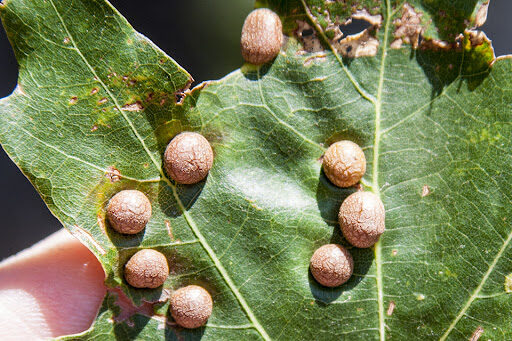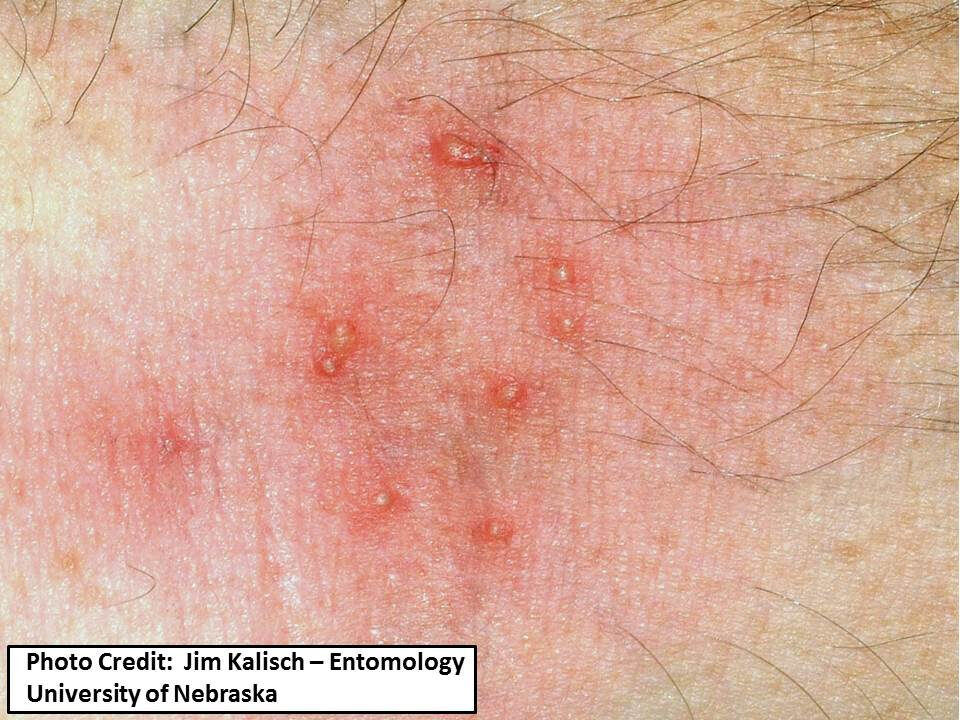As the buzz of the 2024 cicada emergence begins to fade, another tiny, yet troublesome creature is set to make its presence known – oak leaf itch mites. These microscopic pests often follow closely behind cicada outbreaks, leading to itchy, uncomfortable encounters for those who live near oak trees. In this post, we’ll dive into what oak leaf itch mites are, how they relate to cicadas, and what you can do to protect yourself and your property from these unwelcome guests.
What Are Oak Leaf Itch Mites?
Oak leaf itch mites (Pyemotes herfsi) are nearly invisible to the naked eye, measuring just 0.2 millimeters long. Despite their minuscule size, they pack a powerful punch when it comes to irritation. These mites are parasitic and typically prey on small insects, particularly gall midges, which form galls (small, abnormal growths) on the leaves of oak trees.


However, during years of heavy cicada emergence, oak leaf itch mites are known to feed on cicada eggs deposited in oak trees. Once they’ve consumed their fill, these mites may drop from the trees, leading to accidental encounters with humans, causing what’s known as “oak leaf itch.”
Why Do Oak Leaf Itch Mites Appear After Cicada Emergence?
The relationship between cicadas and oak leaf itch mites isn’t entirely direct, but it’s a matter of ecological opportunity. Cicada females lay eggs in the twigs and branches of various trees, including oaks. When these eggs hatch, the emerging nymphs drop to the ground, leaving behind egg casings that oak leaf itch mites find irresistible.
The abundance of cicada eggs provides an ample food source for the mites, leading to population booms. As the mite population swells, they become more widespread, increasing the likelihood of human exposure.
Symptoms of Oak Leaf Itch Mite Bites
Oak leaf itch mite bites can be incredibly uncomfortable. These bites often cause red, itchy welts that resemble mosquito bites but are generally smaller and may be more intensely irritating. These bites usually appear on areas of skin that are exposed, such as the neck, face, and arms. In some cases, people may develop clusters of bites in areas where mites have dropped onto their clothing.
The itching and discomfort from these bites can last for a week or more, with symptoms typically appearing 10-16 hours after exposure. While the bites are not typically dangerous, they can cause significant irritation and discomfort.

Preventing and Managing Oak Leaf Itch Mite Bites
Preventing exposure to oak leaf itch mites can be challenging, especially during years following a significant cicada emergence. However, there are several steps you can take to minimize your risk:
- Avoid sitting or lying under oak trees during late summer and early fall, especially after periods of cicada activity.
- Wear long sleeves, pants, and hats if you must spend time near oak trees.
- Shower and change clothes after spending time outdoors to remove any mites that may have landed on you.
- Keep windows closed, especially those near oak trees, to prevent mites from entering your home.
If you do get bitten, over-the-counter anti-itch creams and antihistamines can help relieve the symptoms. In severe cases, or if you have an allergic reaction, it’s advisable to consult a healthcare professional.
What Can Be Done to Control Oak Leaf Itch Mites?
Unfortunately, controlling oak leaf itch mites is difficult due to their small size and their tendency to reside in the upper canopy of oak trees. Pesticides are not typically effective, as the mites are well-protected within the leaf galls and egg casings.
One of the best approaches to managing these mites is to maintain the overall health of your trees. By doing so, you can reduce the likelihood of gall formation and other conditions that may attract mites. Additionally, regular monitoring of your trees by a professional arborist can help identify and mitigate potential problems before they become severe.
Stay Informed and Prepared
The 2024 cicada emergence may be behind us, but its ripple effects are still being felt, particularly in the form of oak leaf itch mites. By staying informed and taking proactive steps to protect yourself and your property, you can reduce the impact of these microscopic nuisances.
If you’re concerned about oak leaf itch mites or other tree-related issues, don’t hesitate to reach out to Homer Tree Care. Our expert arborists are here to help you keep your trees – and your skin – healthy and itch-free. Contact us today for a consultation or to schedule an inspection of your property.
